#209 Tomorrow's picture: January 14, 1996
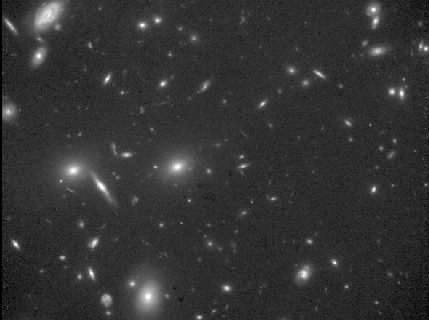
“very bright object in this 1994 photograph by the Hubble Space Telescope is a galaxy. Oddly - most of the objects are spiral galaxies. This rich cluster of galaxies, named CL 0939+4713, is almost half way across the visible universe. Photos like this indicate that clusters in the past contained a higher fraction of spirals than do nearby clusters, which are usually dominated by elliptical galaxies."
Copyright: Public domain
#210 Tomorrow's picture: January 15, 1996
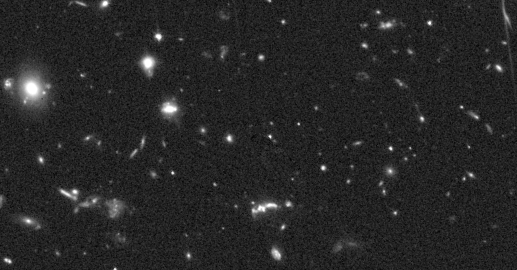
“What did the universe look like near the beginning? This exciting photo by the Hubble Space Telescope is one of the deepest ever taken, and shows galaxies as far away as ever before photographed. The universe back then - when only one third of its present age - was a strange and violent place. Back then a large fraction of galaxies were colliding and interacting. In fact, the shapes of many galaxies in the above photo are more distorted than most nearby galaxies. At this early universe epoch many clusters of galaxies were just forming. The bright twisted group of galaxies below the photographs center contains the energetic radio galaxy 3C324."
Copyright: Public domain
#211 Tomorrow's picture: January 16, 1996
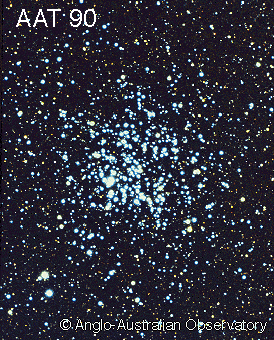
“Many stars like our Sun were formed in open clusters. The above open cluster, M11, contains thousands of stars and is just over three thousand light years distant. The stars in this cluster all formed together about 150 million years ago. The many bright stars in the cluster appear blue. Open clusters, also called galactic clusters, contain fewer and younger stars than globular clusters. Also unlike globular clusters, open clusters are generally confined to the plane of our Galaxy."
Copyright: Anglo-Australian Telescope
Board
#212 Tomorrow's picture: January 17, 1996

“This pseudo-color composite of two recent Hubble Space Telescope images is a picture of a Sun-like star nearing the end of its lifetime. The exquisite details visible in this planetary nebula indicate that when the star passed through its Red Giant phase it initially shrugged off its outer atmosphere gently and evenly producing the outer faint spherical shells. As the process continued, material was apparently ejected in dense clumps producing dust clouds in the bright inner regions. The whole ejection process was amazingly rapid, taking only a few thousand years compared to a 10 billion year lifetime typical for Solar type stars. In the end the hot stellar core, now a white dwarf star, was left - seen here as a white dot at the center of the nebula. Our middle-aged Sun will experience a similar fate ... in about 5 billion years!"
Copyright: Public domain
#213 Tomorrow's picture: January 18, 1996
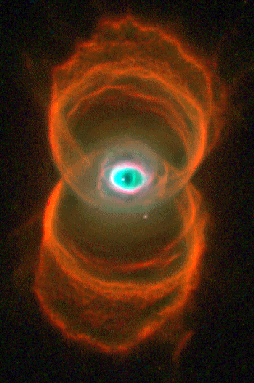
“The sands of time are running out for the central star of this hourglass-shaped planetary nebula. With its nuclear fuel exhausted, this brief, spectacular, closing phase of a Sun-like star's life occurs as its outer layers are ejected - its core becoming a cooling, fading White Dwarf. Astronomers have recently used the Hubble Space Telescope (HST) to make a series of images of planetary nebulae, including the one above. Here, delicate rings of colorful glowing gas (nitrogen-red, hydrogen-green, and oxygen-blue) outline the tenuous walls of the "hourglass". The unprecedented sharpness of the HST images has revealed surprising details of the nebula ejection process and may help resolve the outstanding mystery of the variety of complex shapes and symmetries of planetary nebulae."
Copyright: Public domain
#214 Tomorrow's picture: January 19, 1996

“This dusty disk, viewed edge on surrounding Beta Pictoris, a star only 50 lightyears distant, may signal the presence of an infant solar system. Beta Pictoris is a young Sun-like star just completing its formative stages. About 10 years ago it made the news when astronomers detected a disk around the star because planets are expected to form in such circumstellar disks. Did planets form around Beta Pic? The above recent Hubble Space Telescope image offers supporting evidence that they did. In this false color image, the overwhelming light from the star itself is masked out and features of the inner disk are revealed. The inner part (white area) appears to be slightly warped with respect to the line centered on the axis of the outer parts of the disk. This warp could be caused by a large planet orbiting within the inner clear zone, too faint to be seen directly against the stellar glare. If so, this is an indication that planetary systems are common in our galaxy. Is anybody out there?"
Copyright: Public domain
#215 Tomorrow's picture: January 20, 1996
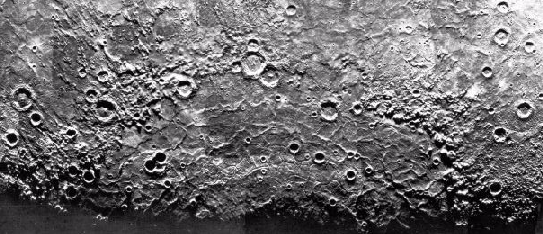
“Mercury, the closest planet to the Sun, has a surface with so many craters it resembles the Earth's Moon. The largest surface feature on Mercury is the Caloris Basin, which resulted from a collision with an asteroid. The basin, which is more that 1000 kilometers across, is visible as the large circular feature at the bottom of the above photograph. Similar features, such as the Mare Orientale, are seen on the Moon. The Caloris Basin gets very hot because it is near the "sub-solar point" - the point on Mercury's surface that is directly under the Sun when Mercury is closest to the Sun."
Copyright: Public domain
Upvote! Resteem! Comment! As you like it! Thank you for attention!